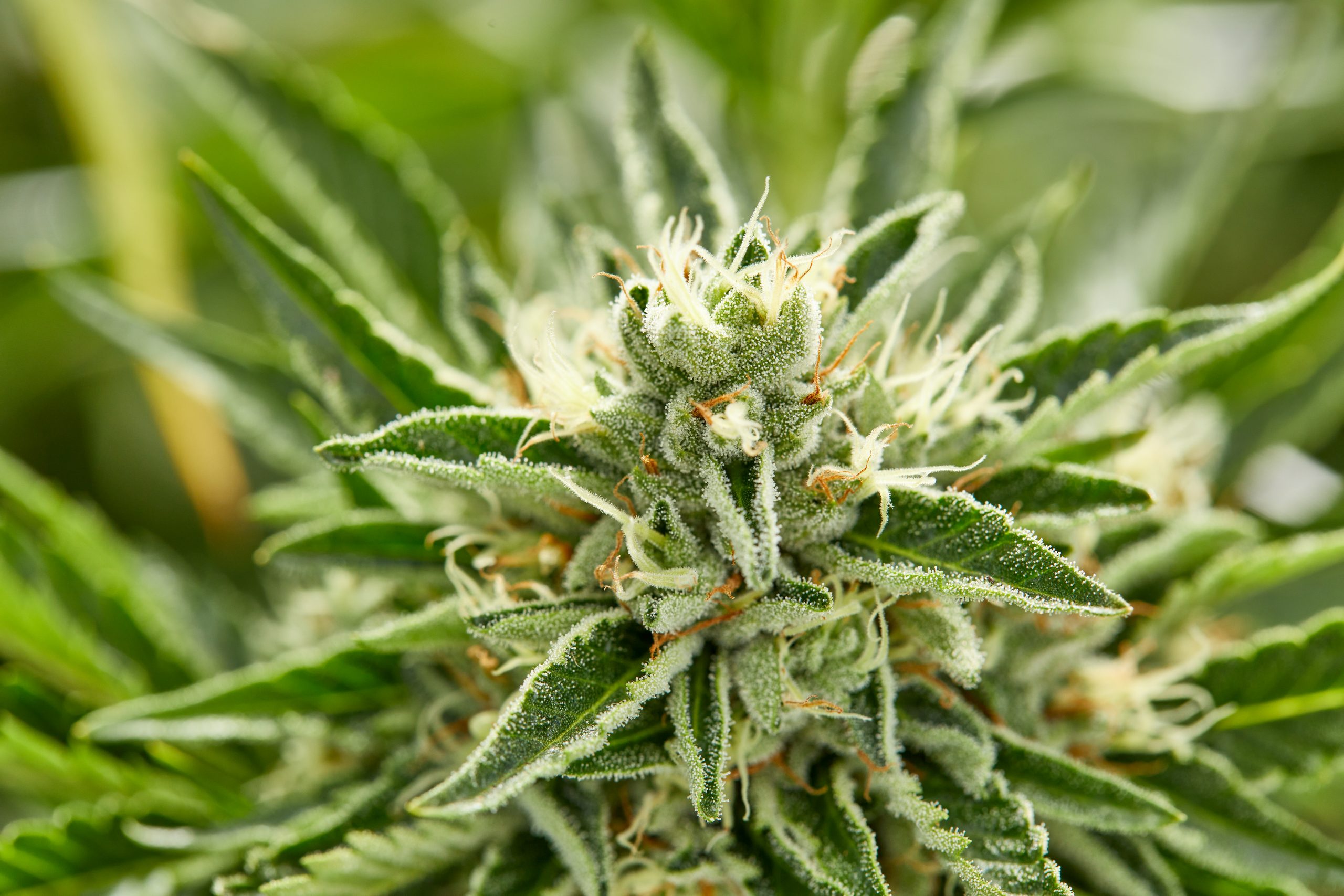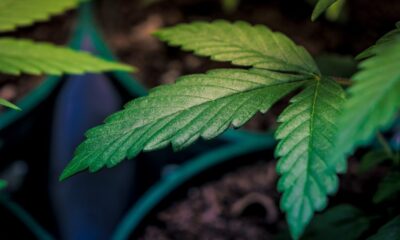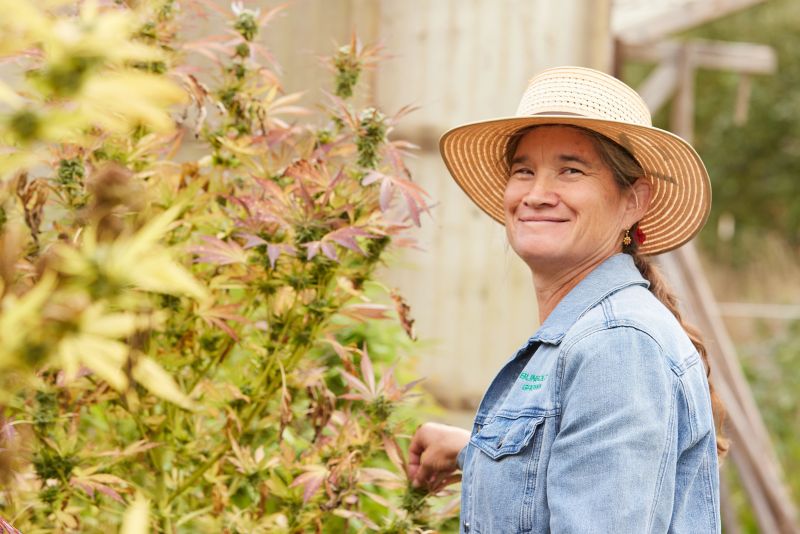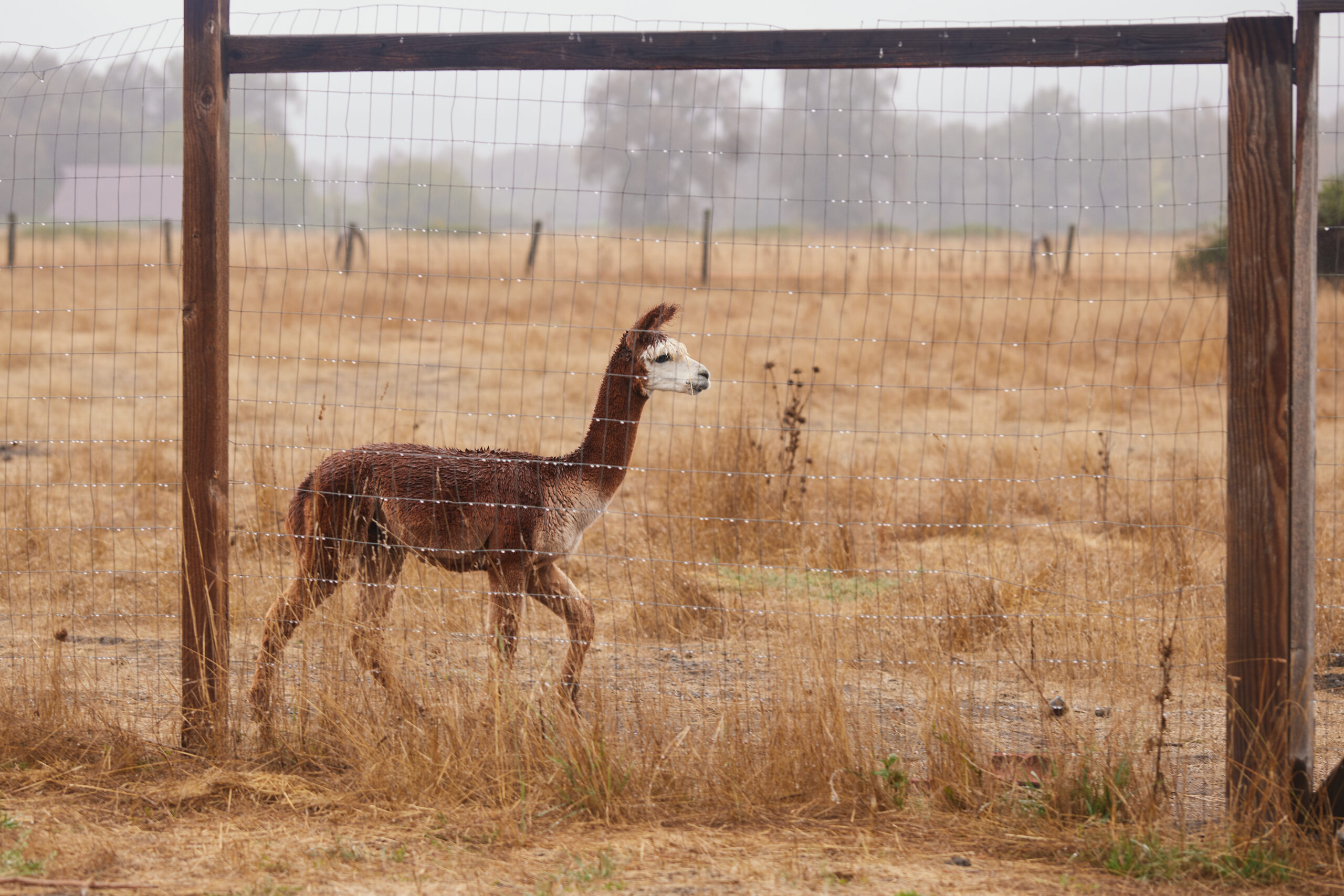Culture & industry
What gives weed its unique aroma?
Published
1 year agoon
By
admin
The smell of cannabis is often attributed to its unique terpenes — the aromatic compounds produced by the plant — but they’re not the whole story behind cannabis aromas. This becomes apparent when you smell two separate strains. For example, compare GMO to a cross of Grape Pie x Do-Si-Do: both have similar terpene profiles, but the actual aroma is completely different.
What else contributes to the complex aroma we smell from cannabis? A new paper published by Abstrax Tech helps answer this question.
Abstrax Tech’s research on what gives weed its aroma
Researchers from Abstrax Tech looked at 31 varieties of ice water hash, a solventless extraction that separates trichomes from the rest of the cannabis plant and ranked them from sweetest to most savory smelling. The samples, many produced by 710 Labs, were divided into three categories: sweet exotic, prototypical (average-smelling cannabis), and savory exotic.
The most extreme smelling strains were examined further to find what compounds were being produced that could be responsible for the more pungent aroma. The results showed that the distinct aromas were due to various unique compounds like alcohols, esters, aldehydes, and more that produce aromatic profiles from fruity to sweet, tropical, or chemical.
The sweet exotic cannabis strains that smelled the most citrusy often contained a new class of tropical volatile sulfur compounds, or “tropicannasulfurs” for short. These are strains like Papaya, Guava, or Tangie where that deep citrusy smell is apparent.
Strains that are considered more savory, like GMO and Chemdawg, contain a compound called “skatole.” Skatole is found naturally in feces — specifically mammalian and bird feces — and is partially responsible for that fecal odor. However, at the low levels found in cannabis, it takes on a completely different savory, funky, and gassy aroma.
In both cases of sweet and savory, it’s not just one molecule giving the unique aroma of the bud, but rather a complex interplay of dozens, if not hundreds, of aromatic compounds producing a unique scent.
Newly discovered aromatic compounds in cannabis
Beyond sweet and savory, there are other cannabis aromas like floral, fruity, creamy, and chemical that have unique compounds responsible for their odor. These other compounds that contribute to the aroma beyond terpenes and terpenoids are referred to as “flavorants,” not to be mistaken for “flavonoids,” which give purple cannabis its color.
Flavorants include esters as a main driver of the fruity smell, with some strains like Banana Scream having over 15 unique esters contributing to the aroma. Abstrax Tech’s research is the first time these small molecules have been directly attributed to the smell of cannabis, along with creamy-sweet strain varieties.
The terpene profile of flower is often used to represent the predicted smell and indicate a particular strain’s effects. However, from this recent research, it’s clear that many other compounds beyond terpenes add to the complex aroma of cannabis. Although these other aromatics are not usually tested for in laboratories, your nose may be the best tool to detect these scents since the nose contains over 400 smell receptors capable of detecting an estimated one trillion scents.
Similar to terpenes, it’s hypothesized that these flavorants may also produce some biological activity that may contribute to the unique effects of different strains. For example, the study’s authors identified indole and skatole as responsible for some of the savory and chemical smells of cannabis. These compounds are very similar to both compounds our body makes and other compounds in nature known for anti-cancer properties and activity on the cannabinoid-2 receptor.
Future research will begin to test for potential therapeutic benefits of these newly identified compounds in the plant.
5 takeaways from Abstrax Tech’s recent research
There’s much more to cannabis’s aroma and effects than its terpene content. Here are five key takeaways from Abstrax Tech’s research:
- The smelly compounds that give cannabis its unique odor are called flavorants.
We typically attribute terpenes to providing different cannabis varieties with their unique smell. Terpenes are just part of the story, with additional flavorant compounds like aldehydes, esters, and alcohols also contributing to the diverse and unique aromas.
- Terpenes do not show a direct correlation to the smell of exotic cannabis varieties but may be useful in characterizing sub-classes of cannabis combined with flavorants.
Terpenes are still important and likely represent unique subclasses of aromas. For example, limonene-dominant varieties with unique flavorants may have a similar aroma to each other but vary greatly from caryophyllene-rich varieties with similar flavorants.
- A new class of compounds called ‘tropicannasulfurs’ are responsible for the sweet/citrusy varieties of cannabis, and skatole (the poopy molecule) in low concentrations gives savory varieties their unique funky smell.
Volatile sulfur compounds (VSCs) are essential drivers of smell and contribute to the skunky smell of many strains. A new class of VSCs called tropical volatile sulfur compounds, or “tropicannasulfurs” contribute to the citrusy and sweet smell of many exotic cannabis varieties. Skatole is responsible for the unique scent of feces, but in the very low concentrations found in cannabis, it can provide funky, earthy, and chem smells.
- Limonene is one of the worst terpenes to predict the taste and smell of a strain.
Limonene may be one of the worst compounds to put on a label if you’re trying to predict how a strain will taste or smell. Strains with rich, savory aromas or light and citrusy aromas are often dominant in limonene. This terpene is not a reliable indicator to predict a strain’s effect, so trust your nose for the best results.
- Terpinolene-rich strains are some of the only ones that can be reliably identified due to their terpenes alone.
Terpinolene-rich strains are known as quintessential “sativas,” like Trainwreck, Jack, and many Hazes. These terpene profiles are some of the only ones that were differentiable based on terpenes alone. While other strains with dominant terpenes, such as myrcene, caryophyllene, and limonene, can produce wildly different aromas, terpinolene varieties tend to be similar and more easily recognizable.
You may like
-


25 Billion Reasons (and Counting) on Why Big Pharma Hates Marijuana Legalization
-


South Africa: Stop arresting cannabis users, Human Rights Commission urges police after complaints about arrests from Rastafarian community.
-


Breaking the Grass Ceiling: Pot firms rethink strategy as young women lead cannabis use
-


California New Laws for 2025: Cannabis Cafes and Entertainment Zones
-


This Company Wants To Pay You To Smoke Marijuana And Write ‘Amazing Reviews’
-


Is it legal to fly with marijuana? Here are the laws you need to know
Culture & industry
Huckleberry Hill Farms and the history of the Whitethorn Rose cannabis strain
Published
10 months agoon
March 12, 2024By
admin
In the heart of southern Humboldt lies Huckleberry Hill Farms, a legacy outdoor cannabis grow started by John Casali. Unlike many of the regulated farms that sprouted up in the wake of Prop 64, Huckleberry Hill stood through the war on drugs era, and its story is steeped in passion, struggle, and resilience. It also led to the creation of the award-winning Whitethorn Rose cannabis strain.
 Gina Coleman/Weedmaps
Gina Coleman/WeedmapsIn the late 1960s, Casali, a teenager then, was immersed in the art of cultivation, learning the process from his mother. “[She] was my guiding light. She taught me the tenderness required for plants to thrive,” he shared. But the harsh realities of the war on drugs cast a shadow over their beautiful farm life. “My parents decided to cease cultivation due to escalating law enforcement. They got afraid of the multiple helicopters in the air throughout the year, dropping guys down on wires and eradicating weed.”
“It was all I knew; it was all I wanted to do — cultivate and honor what my mom had taught me.” — John Casali
Casali remained rooted in his passion, but it would eventually lead to his arrest and 10-year prison sentence in 1996. “One morning, I woke up to 30 federal agents coming up my driveway. They held a nine-millimeter to my head, and for the next nine hours, they searched my place. A year and a half after that, they came back with an arrest warrant.”
 Gina Coleman/Weedmaps
Gina Coleman/WeedmapsHis arrest, considered one of the longest federal incarcerations for a non-violent cannabis offense, struck a harsh chord, especially for someone who’d never even received a speeding ticket before. And while serving time in prison, tragedy struck his family. His parents, who had been traveling and fishing for months aboard a commercial albacore boat, encountered a devastating accident, and Casali’s mother tragically passed away. He recalled this period as one of the most challenging phases of his incarceration. “Those years tested my spirit, but the community’s support kept me going.”
Casali was released in 2004, and he found himself in a changed landscape, one where attitudes toward cannabis had massively shifted — no more helicopters over properties. Still driven by his passion for cultivation, he resumed his cannabis journey and even received a symbolically powerful gift from a friend: a preserved plant cut that was used to breed the Whitethorn Rose strain, an honor and testament to him and his mother’s legacy.
 Gina Coleman/Weedmaps
Gina Coleman/WeedmapsThis genetic preservation — maintaining a strain for a decade — embodies an emotional journey where friendship, loyalty, and love for the craft transcend the bounds of time and adversity. Casali created this unique strain by crossing Paradise Punch and Lemon OG.
Paradise Punch had been borne from his mother’s collaboration and was crafted for its early harvesting properties, allowing it to avoid possible mold due to October rains. The Lemon OG was a gift from a friend; combining the two was a convergence of heritage and camaraderie. With time, the strain gained the notoriety it so rightly deserved.
Whitethorn Rose, a strain forged during the war on drugs, now blossoms in a reformed era. It’s a symbol of endurance, community resilience, and triumph.
Moreover, testing by Columbia University in New York revealed the specific complexity of Whitethorn Rose. It boasts over 60 different terpenes and a staggering 444 cannabinoids. One such rare terpene found in this strain is selinadiene, which carries potential therapeutic properties.
Its emergence in the regulated folds of California’s cannabis market is due to its persistence and the unbreakable spirit that defines Huckleberry Hill Farms. Collaborations with Belle, Frenchy’s Cannoli apprentice from Heritage Mendocino, amplified its presence, leading to multiple Emerald Cup wins. This year, over 90% of the farm is devoted to cultivating Whitethorn Rose.
 Gina Coleman/Weedmaps
Gina Coleman/WeedmapsThe journey from cultivating alongside his mother in the late ’60s to overcoming incarceration and emerging stronger, determined to honor his roots, defines John Casali’s personality. Huckleberry Hill Farms is inspirational and deeply rooted in honesty, community, and an unquestionable passion for sun-grown cannabis.
Huckleberry Hills Farms is getting ready to hit California’s market, and you must try the amazing Whitethorn Rose strain. This cultivar has a remarkable history and a uniquely exotic floral flavor, making it a distinctive cultivar worth experiencing.
The post Huckleberry Hill Farms and the history of the Whitethorn Rose cannabis strain appeared first on Weedmaps News.
Culture & industry
Terroir and tradition: growing craft cannabis and the art of dry farming at Sunboldt Grown
Published
10 months agoon
March 3, 2024By
admin
When cruising down the Avenue of the Giants in Humboldt County, one might not realize there’s a hidden gem for cannabis enthusiasts just around the bend. Nestled along the Eel River in the heart of the Emerald Triangle lies Holmes Flat, a picturesque locale surrounded by towering Redwoods. The scenery? Simply breathtaking, drawing visitors in with its lush, fertile ambiance.
There, you’ll find Sunboldt Grown and its founder, Sunshine Cereceda, a local legend with soil under her nails and a heart as expansive as the California sky.
 Gina Coleman/Weedmaps
Gina Coleman/WeedmapsBorn in San Luis Obispo and raised in Humboldt since the age of seven, Cereceda grew up amidst the wilderness near Garberville in a community of activists and artists dedicated to preserving the region’s majestic trees. Tending to a garden since she was knee-high, she credits her mother’s green thumb for instilling in her a deep love for organic cannabis cultivation.
The challenges of craft cannabis in a commercial world
Her journey to becoming an Original Gardener is rooted in her upbringing within Humboldt’s activist community, where she formed deep connections to the land. She sold her first pound of weed at 14 years old in order to finance her education, which led to her developing her expertise through years of hard work and dedication. To this day, Cereceda’s OG status persists.
 Gina Coleman/Weedmaps
Gina Coleman/WeedmapsHowever, the shift from the underground market to the passing of Proposition 215 in 1996 and Proposition 64 in 2016 brought about major changes, turning her world upside down. What was once a dance with law enforcement became a tangled web of legalities and over-regulation. She grappled with the demands, yearning for authenticity amidst the new state of chaos. The transition from medical to adult use felt like a crash course in bureaucracy, leaving her fatigued and longing for the simplicity of yesteryears.
California’s legal landscape poses significant hurdles for craft farmers like Cereceda. Mandatory distribution and the absence of direct sales leave traditional farmers at the mercy of intermediaries, diluting the spirit of their craft.
 Gina Coleman/Weedmaps
Gina Coleman/Weedmaps“The beauty of craft does not sell itself,” she said, “We have a big disadvantage not being able to do direct [cannabis] sales … Compliance demands encroach upon precious time meant for nurturing our crops.” She dreams of a future where small farmers receive the support they need to thrive and where craft is cherished and celebrated in the marketplace.
Dry farming and the return to terroir
One of the characteristics that sets Cereceda apart from other growers is her cultivation techniques. She’s a farmer who doesn’t water her plants — a practice known as “dry farming.” It’s a centuries-old technique that involves cultivating crops without irrigation, relying solely on natural precipitation and soil moisture.
 Gina Coleman/Weedmaps
Gina Coleman/Weedmaps“Dry farming is about embracing the land and its natural rhythms,” she explained, “It’s a minimalist approach that allows terroir to shine through, bringing forth the true essence of the plant.” By eschewing irrigation and adopting low-intervention methods, dry farming conserves water and fosters a deeper connection between the farmer, the land, and the final product. “It isn’t suitable everywhere, but in regions like Humboldt, it’s worth pursuing … We avoid water addiction and enable plants to adapt naturally, resulting in a more resilient crop.”
Along with composting and strategic planting, Cereceda has honed her dry farming skills, growing cannabis that embodies the unique characteristics of Humboldt’s soil and climate.
 Gina Coleman/Weedmaps
Gina Coleman/WeedmapsAs the sun dipped below the horizon, it cast a warm glow over the rolling hills of Holmes Flat, where one thing was abundantly clear: Cereceda’s journey was far from over. From navigating the complexities of legalization to pioneering sustainable cultivation methods, she embodies the spirit of innovation and resilience that defines Humboldt’s cannabis culture.
Her focus on craftsmanship and terroir-driven cultivation is encapsulated in her products, growing craft cannabis that maintains the essence of Humboldt’s fertile soil and pristine climate.
The post Terroir and tradition: growing craft cannabis and the art of dry farming at Sunboldt Grown appeared first on Weedmaps News.
Culture & industry
Organic farming and regenerative agriculture
Published
11 months agoon
February 9, 2024By
admin
In the vibrant yet challenging landscape of California’s cannabis community, Sun Roots Farm is a rare gem situated in Covelo, California. Driving up its winding entrance will lead to a picturesque landscape, unveiling the incredible experience of visiting the farm’s gorgeous gardens. There, you’ll be greeted by towering cannabis plants reaching 12+ feet high and weighing an impressive 10 – 20 pounds each.
Founded by Forrest Gauder and Patricia Vargas, Sun Roots Farm is a testament to the resilience and integrity within the cannabis community.
By embracing a lifestyle around sustainability, they’ve created an enchanting, forest-like atmosphere with their approach, growing massive plants requiring a ladder for proper care. This landscape is common in Mendocino County, and due to dry weather, it makes for the perfect environment for growing colossal cannabis plants.
The founders’ vision of regeneration
Over the past 12 years, Gauder and Vargas have transformed Sun Roots Farm into their permanent residence. With its foundation rooted in regenerative agriculture, the couple not only cultivates cannabis plants but also tends to various vegetables, herbs, fruits, fungi, native medicinal plants, and perennial gardens.
To nourish their garden, they rely on contributions from their animals, with coops full of chickens and fields of alpacas serving as an exemplary model of regenerative agricultural practices. The farm aims to increase biodiversity and introduce closed-loop farming, where farmers recycle all organic material back into the soil and the farm. This system fosters a harmonious coexistence between the land and its inhabitants.
Exclusive seeds and strains
The farm takes pride in its commitment to exclusive seed cultivation, a distinctive approach that sets them apart. Gauder described the process: “We grow all our plants from seed yearly. From the year before, we’ll select pollen and put it on certain plants to make new [strains] — we’ll then collect those seeds. By the middle of February, we’ll crack open the chosen varieties, starting them in a greenhouse … and propagating them until they reach five-gallon pots.”
The decision to grow exclusively from seed is rooted in the farm’s philosophy of embracing genetic variability and maximizing plant vigor. “The reason behind growing from seed … is the genetic variability,” said Vargas. “We grow exclusively from seed. Local breeding has played a pivotal role in shaping plants that are finely adapted to the valley’s conditions, showcasing positive characteristics such as mold resistance, pest resistance, frost resilience, and more.”
Sun Roots Farm’s staple strain is Velvet Purps, bred locally over ten years ago. This strain descends from the valley and is made from various crosses by Gauder’s family and colleagues. Its origin begins with Jah Goo, crossbred with its brother T2 and Magic Bus, giving rise to a cultivar with impressive purple characteristics.
“The plant produces anthocyanins to protect itself, but it’s also purple,” explained Gauder. “You can find anthocyanins and all sorts of fruits and vegetables, too. It’s the pigment, the color. This compound has beneficial aspects when consumed by humans, like antioxidants, and it protects the plant. We had a bad frost a few years ago that destroyed a lot of gardens around here, but all our purple plants were just fine.”
Packed with trichomes and a captivating blend of berry and pine aromas, Velvet Purps luxuriously unfolds on the palate. This unique strain, locally bred and cultivated by Sun Roots Farm and a select few friends only, expresses a distinctive charm. Beyond its sensory delights, it delivers a tranquil and relaxing buzz, making it an ideal choice for evening consumption.
In a market saturated with options, the exclusivity of strains like Velvet Purps emphasizes the farm’s commitment to offering something truly exceptional.
A farm dedicated to sustainable practices
The farm is also Dragonfly Earth Medicine (DEM) certified. “To be DEM is to achieve a certification beyond organic through third-party verification,” explained Vargas, “It’s a community committed to intentional growth and the creation of closed-loop systems.”
Sun Roots Farm maximizes what the land naturally provides, whether it’s blackberry vines for tea or alpaca manure from their animals. “It’s similar to a homesteading lifestyle,” Vargas continued, “incorporating the cultivation of cannabis with an element of integrity into the product.” From closed-loop systems and water conservation to wildlife sanctuaries and companion planting, the farm is a testament to sustainable living techniques.
Vargas also emphasized the importance of observation and mindfulness in their approach, “Take a moment to observe before you go ahead and start harvesting or before you go ahead and start crunching all over the earth.” Gauder added, “As long as we keep stuff covered in the garden, magic always happens. So we’re feeding the bugs, which eat the material on the ground that feeds the plants. It’s a continual cycle of life, rebirth, death, life, rebirth, death.”
The farm extends its commitments beyond the cultivation season. After harvest, they break down plants, mulch with oak leaves, and cover them with hay, creating a winter blanket that transforms into a layer of beautiful topsoil come spring.
At Sun Roots Farm, a calming environment and sustainable living encourage a deeper connection to the products they make and the ones we consume. The farm is a reality where integrity, intention, and regenerative practices converge to create a sanctuary of sustainable cultivation in the heart of California.

25 Billion Reasons (and Counting) on Why Big Pharma Hates Marijuana Legalization

South Africa: Stop arresting cannabis users, Human Rights Commission urges police after complaints about arrests from Rastafarian community.

Breaking the Grass Ceiling: Pot firms rethink strategy as young women lead cannabis use

California New Laws for 2025: Cannabis Cafes and Entertainment Zones

This Company Wants To Pay You To Smoke Marijuana And Write ‘Amazing Reviews’

Is it legal to fly with marijuana? Here are the laws you need to know

How Much Does an Ounce of Cannabis Flower Cost Entering 2025?

New York Governor Signs Bills To Resume Marijuana Farmers Markets And Classify Cannabis As Agricultural Product

Cannabis Can Help With Holiday Stomach Issues

How Do You Stop Lab-Shopping for the Highest THC Results?

Distressed Cannabis Business Takeaways – Canna Law Blog™

United States: Alex Malyshev And Melinda Fellner Discuss The Intersection Of Tax And Cannabis In New Video Series – Part VI: Licensing (Video)

What you Need to Know

Drug Testing for Marijuana – The Joint Blog

NCIA Write About Their Equity Scholarship Program

It has been a wild news week – here’s how CBD and weed can help you relax

Cannabis, alcohol firm SNDL loses CA$372.4 million in 2022

A new April 20 cannabis contest includes a $40,000 purse

Your Go-To Source for Cannabis Logos and Designs

UArizona launches online cannabis compliance online course
Trending
-

 Cannabis News2 years ago
Cannabis News2 years agoDistressed Cannabis Business Takeaways – Canna Law Blog™
-

 One-Hit Wonders2 years ago
One-Hit Wonders2 years agoUnited States: Alex Malyshev And Melinda Fellner Discuss The Intersection Of Tax And Cannabis In New Video Series – Part VI: Licensing (Video)
-

 Cannabis 1012 years ago
Cannabis 1012 years agoWhat you Need to Know
-

 drug testing1 year ago
drug testing1 year agoDrug Testing for Marijuana – The Joint Blog
-

 Education2 years ago
Education2 years agoNCIA Write About Their Equity Scholarship Program
-

 Cannabis2 years ago
Cannabis2 years agoIt has been a wild news week – here’s how CBD and weed can help you relax
-

 Marijuana Business Daily2 years ago
Marijuana Business Daily2 years agoCannabis, alcohol firm SNDL loses CA$372.4 million in 2022
-

 California2 years ago
California2 years agoA new April 20 cannabis contest includes a $40,000 purse



